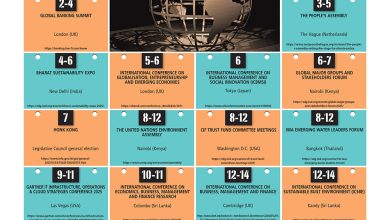REBRANDING SRI LANKA
REIMAGINING THE NATION
Sohan Jayasena recommends smart rebranding to boost the country’s development prospects
How do we feel when our nation is identified as ‘Sri Lankan’ on the global stage? Recent statistics paint a sobering reality. Last year, well over 310,000 Sri Lankans left the country for overseas employment; and since 2019, around 1.3 million citizens have migrated to work and settle abroad.
This exodus speaks volumes about the lack of confidence in the national brand – an identity that many believe no longer aligns with their aspirations or the country’s true potential.
Rebranding the nation is not about discarding its past; but rather, embracing an authentic and comprehensive narrative. It’s about reshaping how the world sees us – and how we see ourselves. For Sri Lanka, this means shedding its fragmented and outdated imagery; and shaping a veritable, modern and inspiring vision.
Sri Lanka is predominantly seen through a fractured lens on the global stage. Remnants of war-torn landscapes, slum communities and long fuel queues are juxtaposed with idyllic beaches, ancient ruins and lush tea plantations.
However, none of these images capture the true potential of Sri Lanka. The current narrative is fragmented and confused, and limits the island’s ability to position itself as a formidable global brand.
Similar to the complete revamping of a corporate brand, this process requires an initial overhaul of the core fabric of the country, its citizens, and the tangible and visible elements of the Sri Lankan brand. The synchronised modernisation of both will ensure a sustained rebranding and repositioning.
A rebranding of this scale isn’t a quick fix since it involves a large number of variables that need to collaborate cohesively. Assuming that the process begins this year, we will begin to see the initial benefits by around 2030.
This process requires a four step plan…
BRAND IDENTITY The first step is to understand and solidify what the primary attributes of the Sri Lankan brand should be. For example, the Singaporean brand sells efficiency and modernity, France sells elegance and culture, and so on.
An example of the Sri Lankan brand could be centred on intellectual prowess, quality and heritage. This will bring clarity of vision for all future efforts.
CORE FABRIC The second stage will address the core fabric of Sri Lanka. This includes the culture, mindset, attitudes, behaviour and outlook of its citizens. And it requires national initiatives to inspire positive change. For instance, one approach would be to leverage the power of the media.
Citizens should be inspired by stories of hope, positivity and uplifting narratives rather than the traditional approach of negative news attracting more views. LMD’s recently launched ‘GOOD NEWS COLLECTION’ is a great start as it spotlights the nation’s positives and achievements, and fosters a sense of national pride.
Such consistent and strategic initiatives can redefine the nation’s mood, psyche and ethos. This initiative is only one of several that can turn the wheels of change.
POLICY CHANGES The third step would be to drive change in structural and systemic issues such as economic, financial and political aspects, address corruption and waste, and attract investments in infrastructure and other national assets.
This stage will also include implementing policies for clean and organised public spaces, even to the extent of guidelines for building facades, effective waste management and humane solutions for stray animals. These moves will effectively create and maintain a clean, modern and polished Sri Lanka.
OUTER LAYER Building the outer layer and sensory elements of the brand will follow in this stage. It will focus on executing global brand marketing campaigns that are designed to communicate a unified personality, identity and narrative through colour, audio, graphics and digital media.
These strategies will powerfully convey our identity and focus on intellectual prowess, quality and heritage. The goal is to present the Sri Lankan brand as polished, cohesive and forward-thinking. By building upon the previous stages, this phase will ensure that the visible elements authentically reflect the nation’s transformed identity.
THE ROAD AHEAD While it’s understood that the recommendations made here are not all-encompassing, it provides a foundational understanding of what such a project entails.
Rebranding Sri Lanka isn’t a moment – it’s a process; and it demands a sustained effort, collaboration and vision. But the rewards are immense because a nation that commands respect on the global stage attracts investments and resources, and inspires its citizens to return, stay and contribute.
Hopefully, we will look back from 2030 and see a nation reimagined: a brand ready to take on the global stage. The journey begins now!
Let’s shape the story we want to tell the world – and ourselves.






